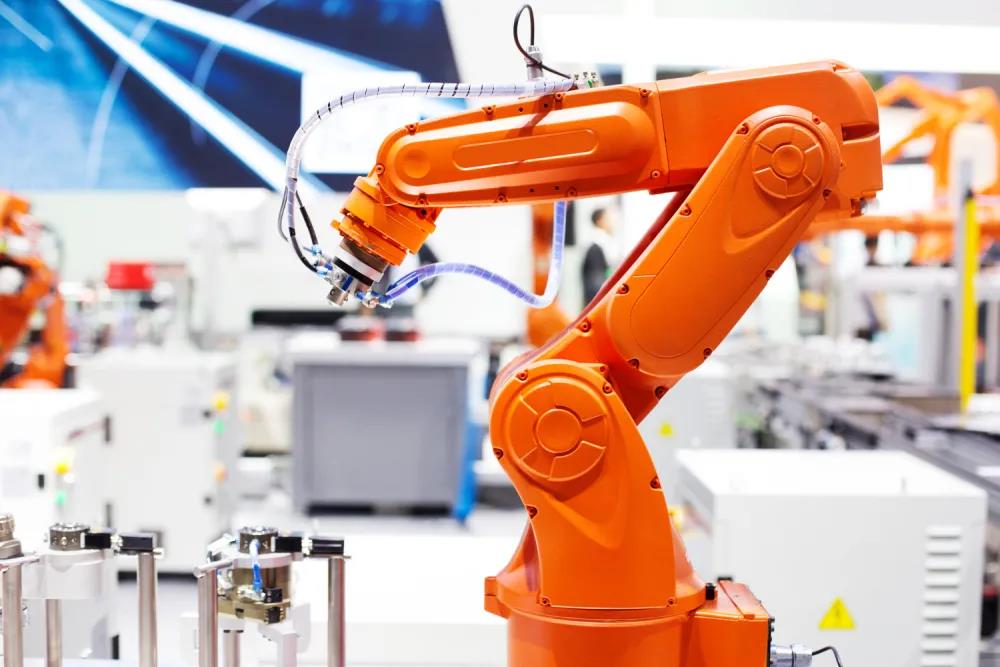China’s digital economy is on the fast lane as long-term investments in informatization, intelligent manufacturing and the digitization of value chains and ecosystem in the manufacturing sector gave birth to a batch of industrial Internet companies.
However, with covid-19 and increased market competition, Chinese manufacturing firms face many obstacles if they want to get ahead in this digitization marathon. Based on multiple years of data analysis and case study, Dong Xiaoying, associate professor with the Department of Management Science and Information Systems at Peking University’s Guanghua School of Management, shares her insights into the challenges in these firms’ digitization drive against the background of innovation of digital technology and an economic downturn induced by the pandemic.

QUALITIES FOR FUTURE
The manufacturing sector is facing an unprecedented challenge against the background of digitization. Multiple factors are affecting the global economy: the covid-19 pandemic is disrupting the entire political and economic landscape; the China-U.S. disputes in science and technology,finance and trade; digitization as the vantage point of global competition and changing global supply chains; manufacturing firms’strategic decisions determine their fate amid global uncertainty.
The ongoing pandemic is a hard test on the tenacity, resilience and basic abilities of a country’s society, economy and firms. Our research shows that firms that have a higher level of digitization and strong online capabilities have been more tenacious.
For future competition in the global manufacturing industry, operation efficiency will still be one of the key factors that determine win or lose. Efficiency, determined by a firm’s operation mechanism, supply system, value chains and ecosystem, directly affects the outcome of a firm’s efforts in cutting costs and boosting productivity.
FOUR STEPS
There are four steps manufacturing firms must follow on their digitization path, but it should be noted that they might encounter different hardships in different phases.
Step 1: The construction of a digital management system, including difficulties in setting up a data standardization system. For firms of a certain scale, data standardization is the “root” of digitization. If it is not done properly, the system will, in turn, generate more inaccurate data, rendering the system useless. Another key function for such a system is to remove manual collection of data since human efforts are more prone to mistakes. In this stage, an interconnected data system is a crucial and basic foundation for digitization and its construction requires huge amounts of time and efforts. Adequate investments will make a firm’s future work much easier.
Step 2: The construction of an intelligent manufacturing Internet of things that links different facilities. In reality, some firms’ devices and facilities might be too old to connect, or, they are from different makers and cannot connect. Firms are advised to replace these devices and facilities in accordance with the amount of their resources.
Step 3: The construction of a full value chain and a full supply chain. For the first two steps, a firm aims to link its interior businesses, but step 3 involves a firm’s efforts to connect with its business partners upstream, logistic partners and clients through intelligent products, apps and websites and e-commerce platforms so as to realize data collection that covers the entire value chain.
A particular difficulty for step 3 is how to make a good digital data management sheet. This sheet, including a firm’s all staff members from senior executives to every employee, should contain trustworthy info and serve as a reference for decision-making,management optimization, operation and response to issues. It should also be applied to the firm’s unmanned transactions with partners both upstream and downstream. This sheet plays a crucial role in ensuring a firm’s operation efficiency and its efforts to cut costs and boost productivity.
Step 4: Maintain closer ties with clients and build an industry Internet system that encompasses clients and consumer-to-manufacturer (C2M). In this phase, a firm needs to form a data-driven ecosystem with clients and partners. It should be able to make customized products in accordance with clients’ complaints,demand and preferences. It can also integrate and adapt its resource distribution quickly in response to market demand. With the help of big data, artificial intelligence and other technologies, a firm should be able to self-diagnose its production system, client service and facility network, which will greatly boost production efficiency.
Having gone through the aforementioned steps to accumulate digital assets, manufacturing firms will gradually hone their abilities to deliver promises for clients, build an ecosystem and improve intelligent technologies. Digitization is a must if a firm wants to gain an edge over competitors both in and outside its specialized field.

TRAITS FOR SUCCESS
For the manufacturing sector, digitization is a marathon without end. With the construction of a digital twin system and Cyber-Physical System (CPS), firms can realize a brand new relation that enables interactions between and fusion of physical production and cyber data usage, which will help continuously improve operation efficiency, cut costs, enhance responses to clients and make high-precision decisions.
With years of investments, exploration and practices, some farsighted entrepreneurs in the manufacturing sector are already striding towards the industrial Internet and help boost the core competition power of their traditional companies amid the digital economy. Firms that are successful in their digitization drive usually have six outstanding traits.
First,strategic perception and long-term investment. A traditional enterprise’s understanding of a digitization strategy at the senior level and the importance it attaches to this strategy determine its digitization progress. Many traditional enterprises are having an increasingly hard time attracting clients and customers and the prices of their products are dropping. Meanwhile, low interior management efficiency, high costs of human resources and other problems persist. As a result, many firms’ digitalization started with solving existing issues. From there, they gather more experiences and gradually deepen the integration of digital applications.
Usually it is the boss who maps its firm’s digitalization strategy,goes deep into the process and funnel limited funds into the drive by reducing investments in other aspects. In terms of organizing, leaders should fully authorize and support their digitization teams to do their jobs and create a sound innovation environment for personnels working in technology and digitization with a proper incentive mechanism. More importantly, senior executives are the first batch of users of their firms’ digital system,and they are the core force in making digital-driven decisions and a management system.
Second, a solid culture of data. The digitization and ensuing capitalization of corporate assets is a key aspect for a firm’s digitization drive. During this process, the standardization, normalization and visualization of data as well as integrated analysis, decision support and value conversion are all austere challenges for a firm’s talents base, management foundation and digital culture. This digital culture includes the collecting, trimming, processing and analyzing of data as strategic assets as well as developing and utilizing it as strategic resources. Meanwhile, the switch from manual to automatic collection of data also requires large amounts of investments. The accumulation, utilization and quality of digital assets play a crucial role in the upgrade from digitization to intellectualization,and it reflects a firm’s management capacities.
Third, interaction between physical value chains and virtual value chains. The reason that a traditional enterprise has to spend years of investments and efforts is because it has to build a digital value chain twin step by step both horizontally and vertically. For instance, a manufacturing firm must go through the digitization of all processes that include management flow, intellectual manufacturing facilities, production procedures,products, end-to-end value chains and an industrial Internet platform. It also needs to fully integrate, analyze and visualize logistics, cash flow and business flow in relation to data flow through collecting, integrating, analyzing and utilizing data from each section of its value chain. With the help of cloud computing, big data and Internet of things, resources scattered throughout the physical value chain can be integrated and clarified at the level of the virtual value chain, ensuring high-precision supply-demand match and transparent procedural management.
The fourth trait involves a combination of manufacturing knowledge and Internet technologies. Compared with Internet companies, those in traditional sectors have their own advantages: industrial knowledge and professional knacks that have been accumulated over many years; time-tested industrial flow and operation models as well as highly-specialized resource systems and capabilities; the knowledge and abilities of clients and customers in the service sector; a development and operation system for products and services based on clients’ demand. Inevitably, traditional enterprises have their own weaknesses, including inadequate understanding of the digital economy,an outdated operation system, lack of the ability to interact deeply with a vast number of clients, feeble digital assets and the absence of an interior innovation mechanism. These are the fields in which traditional companies need to learn from their Internet counterparts.
Fifth, achieve exterior empowerment via self-empowerment. During the process of digitization, a clever move is to start from solving a firm’s own management and operation issues. It can then spread these tried-and-tested solutions to its partners and companies both upstream and downstream. Once proved successful, digitization, in and of itself, can generate values in the fashion of products and services.
Finally, a sound ecosystem for industrial digitization. In the process of industrial digitization, cooperation between big companies and smaller ones is crucial for the digitization ecosystem since the latter can hardly afford the huge investments needed for the cloud technology and data centers. On one hand, big firms can open this platform to partners so as to form a tightly coupled cooperation ecosystem; on the other, they can provide technological services for smaller firms through various channels to boost these firms’ business development and market capabilities. During this process, data standards,platform management, data security and the co-existence of firms of all sizes are all key issues that need to be solved urgently.
 Programs
Programs